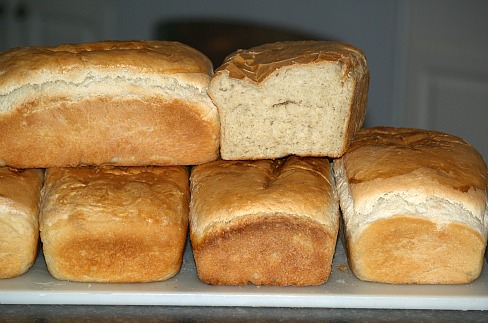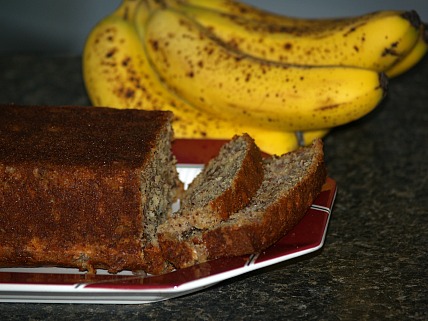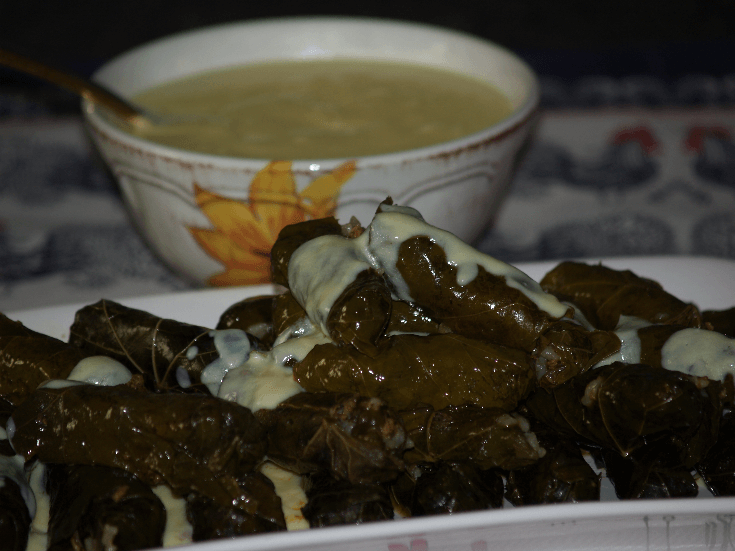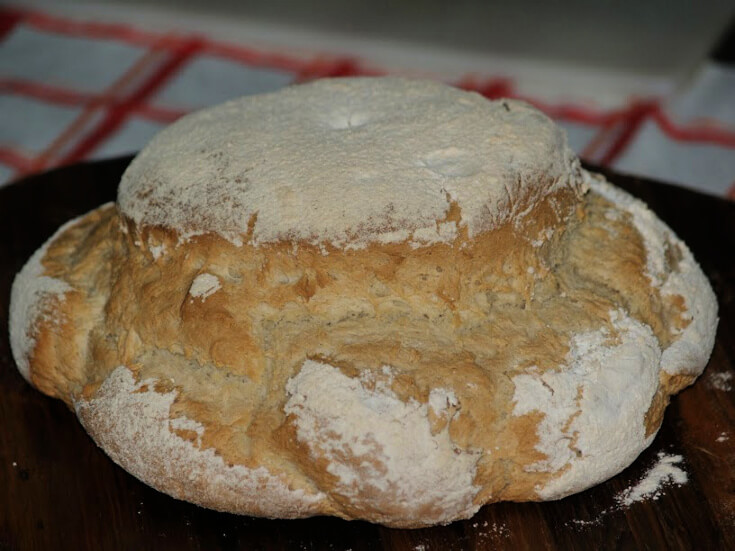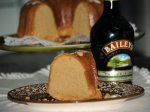- Painless Cooking
- Bread
- Bread Making Tips
How to Bake Bread Recipes
I always wanted to learn how to bake bread recipes since I was very young. Mom would take me with her to a local bakery to buy bread and rolls. The smell was all it took to win me over. The baking bread had to be the most delicious aroma in the world! I have been making bread now for many years. When my children were young the bread was eaten up as soon as it came out of the oven. Like me the aroma won them also. They were always waiting in the kitchen for the bread to be removed from the pans.
There is nothing like the memories of baking fresh breads for your family but there are other advantages as well. Of course there is no comparison in taste with the commercial brands. The taste of good homemade bread is like nothing else. That is why it is usually all eaten as soon as it is baked. When made with whole grains it is also healthy for you to eat, adding fiber to the diet. It is also very economical to make. A loaf of white bread from the grocery is far more than what it cost you to make a loaf and it really isn’t that hard to do.
I learned how to bake bread recipes. There are basically two types; the yeast bread recipes and the quick bread recipes. With both the task of baking them today is far easier than in the past of our grandparents. Today we have many dependable leavening agents like yeast, baking powder and baking soda to use in our bread making. Even our ovens are much more dependable, having consistent and controlled heat. I remember Mom telling me to keep quiet and not to shut a door when she had something baking in the oven. It was because any disturbance in the house might make the cake or bread in the oven fall.
DELICIOUS WHITE BREAD RECIPE
- About 17 to 18 cups of flour
- 3 Tablespoons dry yeast (3 Packages)
- 6 Cups warm water (112F degrees)
- 1 Cup sugar
- 2 Tablespoons salt
- 2 Tablespoons solid shortening (I use Crisco)
Measure out 18 cups of flour in a large bowl; move about 10 cups to another large mixing bowl.
Add yeast to the bowl with 10 CUPS OF FLOUR.
Combine warm water, sugar, salt and shortening; with mixer beat liquid into FLOUR YEAST mixture.
Beat mixer until well blended; continue adding remaining flour while beating.
NOTE: I finish mixing with my floured hands adding enough of the remaining measured flour to form a dough ball; dough is a little softer than some of the other white yeast breads.
When dough is smooth place in a greased clean bowl turning to coat top; cover with plastic wrap.
Place bowl in a warm place and let rise until double in bulk.
Punch dough down and divide equally into 6 greased loaf pans.
Let rise again until double in bulk; PREHEAT OVEN TO 350F degrees.
Bake about 20 to 25 minutes until tops are brown.
YEAST BREAD RECIPES
It is important to understand how to buy, store, use yeast and how it
works. Yeast comes in a fresh cake, dry or fast rising dry yeast.
Very, very old recipes might call for the fresh yeast, but generally
speaking I find most recipes call for the dry yeast. The fresh yeast
should be kept in the refrigerator until using and it does not last as
long.
A package of dry yeast equals one cake of the fresh yeast. The dry yeast is more convenient to keep on hand. It does not have to be refrigerated and will last for up to one year. Before adding the dry yeast to the dry ingredients you must sprinkle it over lukewarm water. Let it stand a few minutes until it absorbs into the water before stirring the yeast water mixture into the other dry ingredients.
YEAST CONVERSION TABLE
|
¾ Teaspoon instant yeast 1 Teaspoon instant yeast ¾ Tablespoon instant yeast 1 Tablespoon instant yeast ¾ Ounce instant yeast 1 Ounce instant yeast |
1 Teaspoon dry yeast 3 Teaspoons compressed yeast 1 Tablespoon dry yeast 3 Tablespoons compressed yeast 1 Ounce dry yeast 3 Ounces compressed yeast |
The fast rising instant yeast is the newest on the market. One package equals one package of the regular dry yeast or one cake of the fresh yeast. The difference with the fast rising yeast is in the mixing method. It should be mixed in with the dry ingredients first and then the warm liquid is added. The fast rising yeast will cut the rising time in half.
NOTE: Something to remember about using yeast. Recipes call for lukewarm water because too hot of temperature will kill the yeast and too cold will retards its growth. Temperature of liquid going directly to the yeast alone should range between 105F degrees and 115F degrees. Liquid being mixed with yeast and other dry ingredients together should be between 120F degrees and 130F degrees.
I learned how to bake bread recipes like Easter bread or onion buns with yeast in them usually call for kneading. This process mixes the yeast thoroughly with the other ingredients. It ensures a smooth and uniform texture. Lightly sprinkle some flour on a board. Put the dough on the board. Flour your hands. Flatten the dough with the palms of your hands and fold it over. Flatten it again and fold the other side. Continue this process until the dough becomes smooth and elastic to the feel. Kneading helps to develop the gluten which helps the dough to stretch and develop the bubbles of gas released by the yeast. You may have to add extra flour until it is no longer sticky. (Not too dry)
Most bread recipes tell you to place dough in a large greased bowl to rise until dough doubles in size. Turn the dough so as to grease all sides of the dough ball. Cover the bowl with clean towels. Set in a warm draft free place. When dough has finished rising, most bread recipes will instruct you to punch it down with your fist in the middle of the dough and shape the dough into loaves. Place the dough in greased loaf pans and then cover to rise again before baking. NOTE: Just follow your recipe instructions.
Tips for yeast bread recipes:
- It is best to use high quality flour with high gluten. Whole grain flour is best if you can grind it right before making bread. When it sets it loses some of the nutrients.
- Milk, water, a combination of milk & water, potato water, buttermilk or diluted evaporated milk can be used in bread recipes.
- Potato water or whey feeds the yeast.
- Milk adds to the food value, keeps the bread better and makes better toast.
- Milk or buttermilk should always be scalded and cooled to lukewarm before combining with the yeast to stop enzyme action with yeast causing the softening of the dough.
- A little salt helps control fermentation of the dough and improved the flavor of the bread. Too much salt may retard rising of dough. (1 to 1 ½ teaspoon to 1 cup of liquid). Without salt the bread may fall and be coarse textured.
- Sugar feeds the yeast and contributes to nicely browned crust. (1 Tablespoon for each cup of liquid is sufficient for plain breads) Sugar is often substituted with molasses, honey or brown sugar.
- Too much sugar requires more yeast which overpowers the flavor of the bread.
- Shortening and eggs increase flavor and tenderness, improve browning and prolong keeping qualities.
- Oil makes heavier dough; use solid shortening for lighter dough.
- Whole eggs or egg yolks are added to yeast roll dough to give a delicate texture and a thin crisp crust. Eggs make the bread lighter and airier.
- Egg whites and water are used for the liquid when trying to achieve an open texture and a thick crisp crust.
- Always knead vigorously.
- Allow enough time for rising.
Causes of failure in yeast bread recipes:
- Dry coarse bread: too much yeast, too much flour, too long rising in the pan, insufficient kneading
- Heavy bread: too hot or too cold liquid, too much sugar or fat, insufficient kneading or too little kneading, insufficient rising in pans, insufficient baking time
- Dark streaks or doughy spots in the bread: too much flour added during kneading or shaping, insufficient kneading, brushing too heavily with melted shortening before rising periods
- Browned or burned crusts: too much sugar for the baking temperature, too hot an oven, too long baking
- Sour bread: too long fermentation or too warm a temperature
QUICK BREAD RECIPES
Quick bread recipes are made with quick acting leavening like baking powder, baking soda or both. Like the soda bread
these bread recipes are just as they sound “quick”. Baking soda is
usually used in recipes when one of the ingredients is an acid, like
sour cream, buttermilk, molasses or fruit juices. Baking soda starts
working as soon as it comes in contact with the liquid so should be
baked right away. Double acting baking powder starts working when it
comes in contact with the liquid and again when it comes in contact with
the heat. For this reason it does not hurt to let these recipes set a
short while before baking.
These bread recipes include biscuits, some doughnuts, muffins, cornbread and sweet bread recipes. The best advice I can give you when making quick breads is to follow your recipe. (The best recipes comes from family and friends who have already tried the recipe)These are very easy to make and a good recipe produces good bread. The secret in a perfect quick bread is in the lightness and speed in which the ingredients are handled. Some quick bread recipes will instruct you not to over mix. If the batter is mixed too much, the breads will be tough and won’t rise.
Also follow your recipe as to the recommended oven temperature. For instance when baking biscuits, too hot an oven will make the biscuits soggy inside. If the temperature is too low the biscuits will become dry and inferior in shape. Again, pick out a good recipe and follow it and you will have a good product.
HOW TO BAKE BREAD RECIPES
BLACK WALNUT BANANA RECIPE (Quick bread)
- 1 ¾ Cups sifted flour
- 1 ¼ Teaspoons baking powder
- ½ Teaspoon baking soda
- 1/3 Cup solid shortening
- 2/3 Cup sugar
- 2 Beaten eggs
- 1 ¼ Cup mashed ripe bananas
- ½ Cup chopped black walnuts
Preheat oven to 350F degrees.
Instructions: Sift together the flour again with the baking powder,
soda and salt. Cream the shortening with the sugar, adding the eggs and
beating until light and fluffy. Add the dry ingredients alternately with
the bananas mixing until blended. (Do not beat) Turn into a greased loaf pan.
Bake for about 1 hour or until a pick comes out clean.
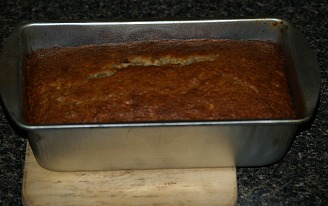
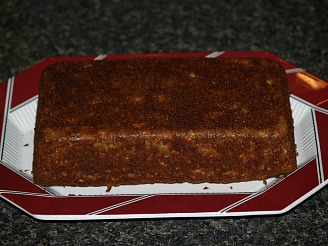
UNLEAVENED BREAD RECIPE / SOUR DOUGH BREAD RECIPE/SALT RISING BREAD
The other three bread recipes I want to mention are the unleavened bread, the sourdough bread recipe and salt rising bread.
These three breads work on the same principle of producing their own
yeast. Salt rising bread was my mothers favorite bread. When I was young
it turned me off because of the sour smell. As I got older I realized
the delicious flavor is why Mom liked this bread so much. I have made
the sourdough bread for many years and do not find the odor as offensive
as the salt rising. The unleavened bread recipe is fairly new to me but
I am finding it very interesting. The unleavened bread was made by
early Egyptian bakers and is mentioned many times in the Bible. It is
the forerunner of the sourdough bread.
With a sour dough bread recipe, you must start out with a starter. It takes about 5 to 7 days to accomplish. stirring each day until it sours. Then store it in the refrigerator. Twice a week you must feed it more flour and let it set out at room temperature for 12 hours before returning it to the refrigerator. For each cup of the starter you use in a recipe, you must replace it with 1 cup of flour and 1 cup of water. It must set out at room temperature again before returning to the refrigerator.
The salt rising bread makes its yeast by combining potatoes, cornmeal and boiling water in a bowl. You let this set in a warm place overnight or until it becomes frothy. Then you drain off the liquid and add other ingredients to the liquid. Knead and place in pans. Then you must let it rise before baking.
I was surprised at how easy it is to make unleavened bread, how it works and how it tastes. I have heard that the unleavened bread is what the miners made and was also made on the wagon trains. I put 3 cups of whole wheat flour in a bowl. (You can use other kinds of flour)I added 1 teaspoon salt and enough water to make it sticky. I turned it out on a wheat floured board to knead. When it was still slightly sticky, I placed the dough in a greased pan. I set the pan on my stove which was still warm from using the oven. (Next time I am going to try covering it with a cloth and setting it in the OFF oven with a pan of boiling water to keep it warm)I covered with several clean towels and let it set overnight. When I got up, I checked it but decided it didn’t raise enough so I let it set for a few more hours. (A total of 15 hours). I kept smelling it for a sour odor but never detected one. I really did not know how this was going to turn out! I baked it for 50 minutes and couldn’t wait to cut it. The crust was very hard so I poked it with a knife to start the cutting. The hot bread was pretty good with butter! When it cooled, I wrapped it with plastic wrap. The next time I cut a piece it was softer and much easier to cut. This bread is especially good as a grilled cheese.
Like I have said many times before, pick a good recipe and follow the instructions.
